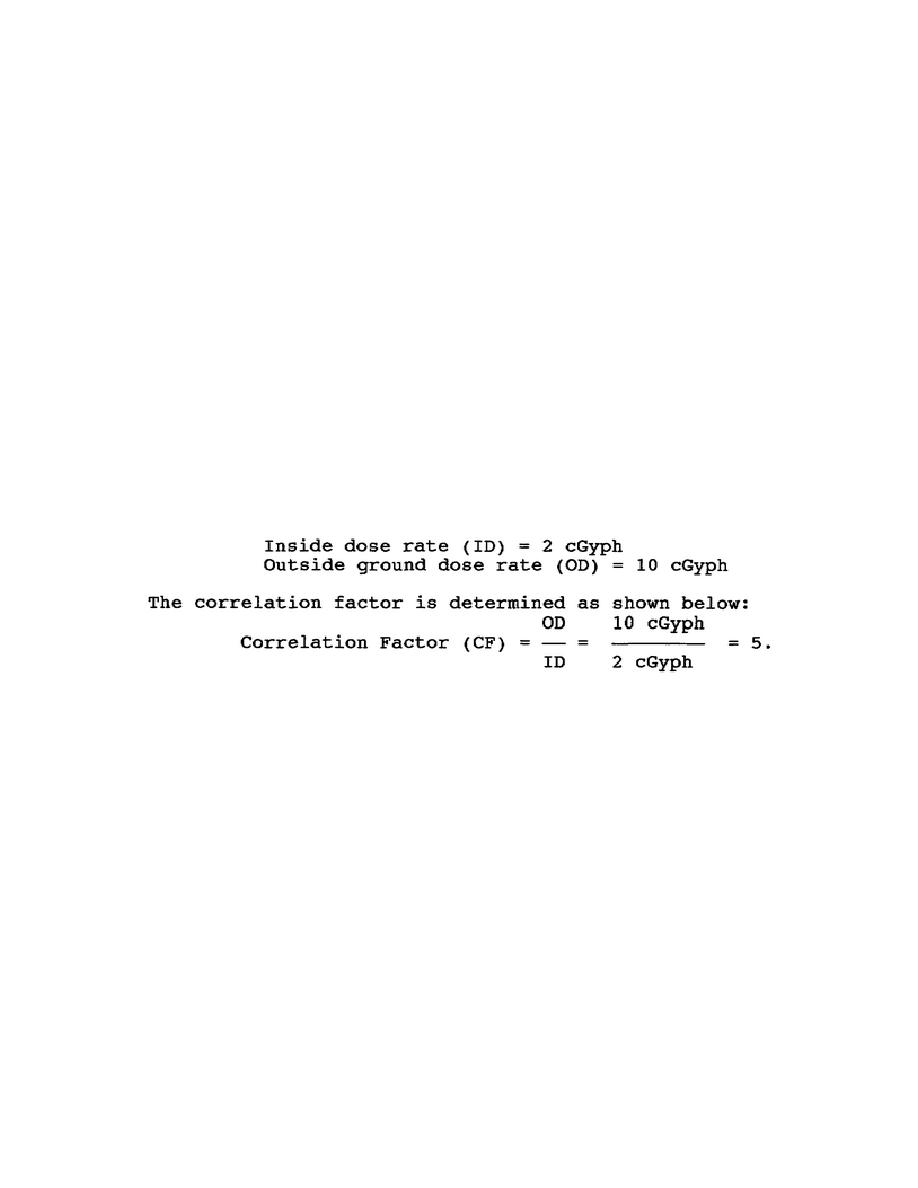
a. Procedure.
The correlation factor data required consist of two dose-rate determinations
that must be made within 3 minutes of each other.
One is a direct
determination of ground dose rate made at a location 10 meters from the
shelter, if possible, unless the shelter is underground.
The other is a
reading made with the survey meter held in the center of the shelter, 1
meter above the floor, and pointed around in the circle in all directions.
b. Example.
A company monitor is located in an open front shelter dug into the side of a
hill. Since there is no published correlation factor for a shelter of this
type, a spot outside the shelter has been selected at which the ground dose
rate will be taken.
A nuclear burst occurs several kilometers away and
about 30 minutes later the monitor detects the arrival of fallout.
After
the completion of fallout, the monitor takes a dose-rate reading of 2 cGyph
with the survey meter at the center of the shelter, 1 meter above the
shelter floor, and then goes immediately to the selected location outside
the shelter and takes a ground dose-rate reading of 10 cGyph. The monitor
returns immediately to the shelter to avoid unnecessary exposure. The two
dose-rate readings were made within 3 minutes of each other; thus the
correlation factor data for this shelter are:
NOTE
In this example, the transmission (TF), discussed
later in this subcourse, is 1/5; that is, 1/5 of the
outside dose rate was received inside the shelter.
PART B - AERIAL RADIOLOGICAL SURVEYS
Radiological contamination information can be obtained by using the AN/VDR-2
RADIAC Set in a rotary or fixed-wing aircraft.
Since aerial surveys are
conducted rapidly and at a distance from the radiation source, the aerial
survey party would be exposed to considerably less nuclear radiation than a
ground survey party, if an equivalent ground survey were conducted over the
same area. Thus, aerial surveys can be employed over areas that have dose
rates unacceptably dangerous to ground survey parties.
CM5206
4-6



 Previous Page
Previous Page
